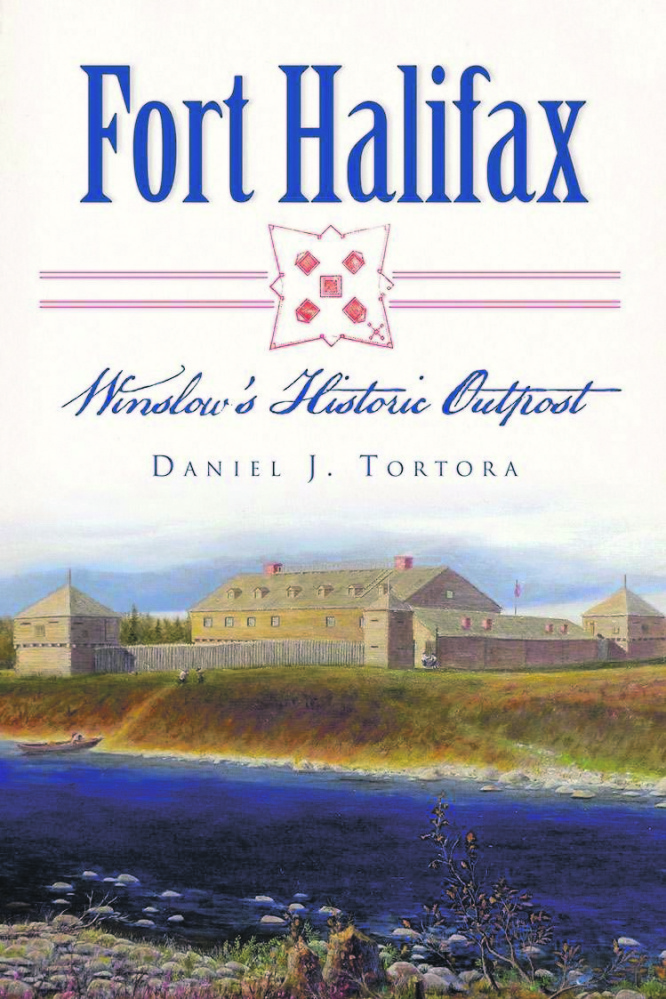Years ago, I bought a copy of Gen. Carleton E. Fisher’s handsome and informative monograph, “History of Fort Halifax” (1972). Only 29 pages long, it was a nicely printed model of efficiency that told the military history and importance of the installation, briefly but with footnotes and surviving building plans. As an historian, I am not alone in having made good use of it ever since.
Now comes a book, “Fort Halifax: Winslow’s Historic Outpost” by Colby College history professor Daniel J. Tortora, that gives a fuller picture. Though Tortora acknowledges and builds upon Fisher’s pioneering work, he is able to go into more detail than previous writings.
The role of the Massachusetts bastion at the confluence of the Sebasticook and Kennebec rivers in 1754 played a huge role in the French and Indian Wars and the opening up of Maine to English settlement.
Previously, the Kennebec-Chaudiere river corridor allowed the French and Abenaki to move freely between Maine and Quebec and, earlier in the war, to drive all English settlers into Kittery, Wells and York. As the fortunes of conflict shifted, Fort Halifax (named for George Montagu Dunk, Second Earle of Halifax and a founder of Nova Scotia’s great seaport) became a choke-point, confining the French and Indian forces to Canada.
On another level, the fort is the oldest part of the town of Winslow and the area’s visual symbol. What townsfolk and tourists see today is the blockhouse, part of a far larger and intimidating complex. It is said to be the oldest surviving colonial blockhouse in the United States. “Surviving” is the operational word, because time, hard use, benign neglect and the flood of 1987, which swept the structure away into a scattering of jackstraws along the riverbanks, led to complete reconstruction and appreciation by the people of Winslow.
Though forts are intended to protect and maintain populations, most are not built to last and must be kept up. Fort Halifax was never besieged by a large force, though it was occupied by Capt. Lithgow and a force of Massachusetts militia during the last Indian War and visited by English explorer John Montresor after the war and by Benedict Arnold and 1,100 rebels during their famous march on Quebec in 1775.
By the time the garrison was dispersed, the Fort House was used for Winslow town meetings and a tavern. One might picture the complex as kind of a military outpost turned into a mall.
As the fort fell or was taken apart, one blockhouse survived pretty much against all odds and souvenir hunters. It also became the site of early archaeological digs and intense industrial construction.
Tortora gives the reader nine chapters from “Indians and Pilgrims: Fort Point before 1754” to “Winslow’s True Treasure: Fort Halifax since 1990.” In reading them we learn much about local, state and national history and preserving buildings as physical structures and symbols.
There are patriots and frontiersmen aplenty who passed through the gates of Fort Halifax. Before it became a fort, it was the location of a key Indian settlement, and now it has become the center of Fort Halifax Park, a spot for wildlife, festivals and weddings, as well as renewed historical exploration.
Tortora does a first-rate job of tracing the individuals and groups who worked to preserve the blockhouse, including antiquarian Rev. Timothy Paine, students of Colby College, historian William Goold, the Maine Historical Society, the Daughters of the American Revolution and the state of Maine. The book includes wonderful black and white maps, plans, portraits and images from the 250-year history.
As the author rightly proclaims, the building’s survival is “a testament to the will and spirit of the town that has fought to preserve it for future generations to enjoy, study and marvel upon that ‘venerable relic’ that continues to reinvent itself but remains the enduring symbol of the town of Winslow.”
William David Barry is a local historian who has authored/co-authored seven books, including “Maine: The Wilder Side of New England” and “Deering: A Social and Architectural History.” He lives in Portland.
Send questions/comments to the editors.



Success. Please wait for the page to reload. If the page does not reload within 5 seconds, please refresh the page.
Enter your email and password to access comments.
Hi, to comment on stories you must . This profile is in addition to your subscription and website login.
Already have a commenting profile? .
Invalid username/password.
Please check your email to confirm and complete your registration.
Only subscribers are eligible to post comments. Please subscribe or login first for digital access. Here’s why.
Use the form below to reset your password. When you've submitted your account email, we will send an email with a reset code.